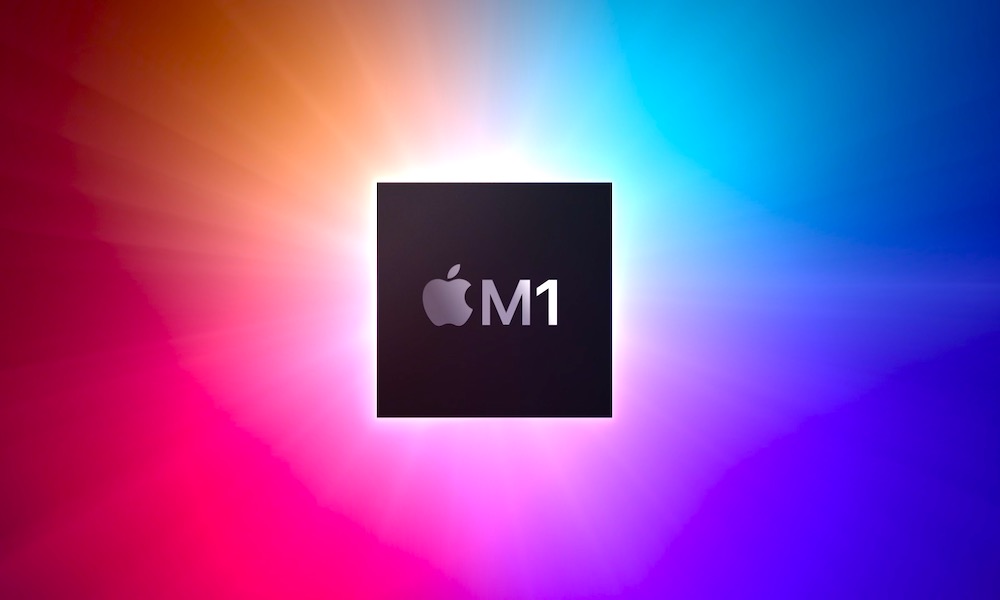Apple’s M1 Max Is a Whopping 3x Faster Than the Original M1 (and Leaves Intel Completely in the Dust)
 Credit: Apple
Credit: Apple
Toggle Dark Mode
Although Apple threw around some pretty impressive numbers when it unveiled its new M1 Pro and M1 Max chips earlier this week, one thing that it very pointedly avoided was drawing any comparisons between these more powerful versions of Apple Silicon and the original M1 chip that it first debuted last fall.
This is understandable for a few reasons. Obviously, Apple doesn’t want to disparage the incredible work it’s done with the M1 chip in the first place, and it’s still very much a part of the MacBook Pro family in the earlier 13-inch model.
What’s the Real Reason Apple Avoided Comparison?
In reality, Apple probably feels it’s more appropriate to make an Apples-to-Apples comparison (pun slightly intended) by looking at the prior MacBooks in the same class. This means the Intel-based 13-inch MacBook Pro and 16-inch MacBook Pro since that’s what most users considering the new MacBooks will be coming from anyway. The fact that this lets Apple get a dig in at Intel is just a bonus.
Still, it’s interesting to see how far Apple’s Silicon has come in the past year and get a better idea of what all of these extra cores can actually do. Since Apple never talks clock speeds in its chips, it’s hard to say for sure if the high-performance cores on the M1 Max and M1 Pro are individually faster than those on the M1, but we suspect not, since all three chips still carry the same “M1” designation.
What’s significant in the new chips, however, isn’t whether the cores are faster, but rather the fact that there are a lot more of them.
Apple’s original M1 chip included eight cores, of which four were high performance, and four were high-efficiency. The M1 Pro and M1 Max don’t just take that up to 10 cores, but they trade off two of the high-efficiency cores for high-performance ones.
In other words, the M1 Pro/Max has twice as many cores where it counts — eight high-performance cores versus four on the standard M1.
So, it should be no surprise that the M1 Pro and M1 Max both clock in with multicore Geekbench scores that show double the performance. Twice as many cores, twice as fast. It’s pretty basic math.
We’re not entirely sure where the entry-level M1 Pro chip fits into this since it has only eight cores. Rumour has it that it’s two of the high-performance cores that have been sacrificed here, so we’d guess this one, which is found only in the very base model 14-inch MacBook Pro, would come in 1.5 times faster than the M1.
Apart from that single outlier, however, all the other M1 Pro and M1 Max configurations feature the same 10-core CPU, so the second-tier 14-inch MacBook Pro will offer the same raw multicore performance as the highest-end 16-inch MacBook Pro with the full M1 Max chip.
Where the M1 Pro and M1 Max both differ — and pull out well ahead of their older brother — is in graphics performance since they offer at least twice as many discrete GPU cores as the standard M1.
Graphics Performance
The first Metal benchmarks of the M1 Max showed up yesterday, which reveal that the highest-end version of the M1 outperforms the original by over 300%.
Since the M1 Max is available in both 24-core and 32-core configurations, it’s unclear which chip is being tested here, but it’s likely only the 24-core variant since the math lines up with this. Much like the CPU cores on the M1 series chips, there’s no reason to believe the M1 Pro/Max have faster GPU cores than the M1 — they just have way more of them.
Apple has already said that the 32-core GPU in the M1 Max is up to four times faster than the M1, which makes sense since it has four times the GPU cores. By the same logic, the 24-core GPU version should be three times faster, and the full 16-core M1 Pro should be twice as fast.
In real-world terms, however, the M1 Pro and M1 Max have a big advantage over the M1 that goes beyond raw speed. Both chips can be configured with significantly more RAM, and all of that RAM is available to the GPU cores. So, not only will an M1 Max handle graphics tasks up to four times faster than an M1, but it will also be able to handle graphics projects that are four times larger.
M1 Max vs. Intel
On the surface, the M1 numbers shouldn’t be surprising, as all they seem to provide is that Apple is using the same CPU and GPU cores across its entire M1 lineup but simply using more of them to get significant performance gains.
However, this also lets these chips pull out even further ahead of Intel. The M1 already leaves most Intel chips in the dust when it comes to raw CPU performance. In fact, it comes in on par with Apple’s base Mac Pro, which features an 8-core Intel Xeon CPU.
High-end Intel machines still dominated the M1 in graphics performance, while a dedicated Radeon or Nvidia GPU generally beat out the eight GPU cores in the M1.
For instance, while the 13-inch M1 MacBook Pro handily beat out the 16-inch Intel Core i9 MacBook Pro in raw CPU performance, the Metal score for that older Intel machine, which featured a Radeon Pro 5600M, still showed double the graphics performance.
This changes with the M1 Max, however, which now offers a Metal score that’s over 1.5X faster than the highest-end Intel MacBook Pro.
| M1 Max vs Intel Core i9 | Metal Score |
| M1 Max (16-inch MacBook Pro) | 68,870 |
| M1 (13-inch MacBook Pro) | 20,581 |
| 9th-gen Intel Core i9 with Radeon Pro 5600M (16-inch MacBook Pro) | 42,510 |
Note that even though the M1 Max chip is dominating the charts right now and shows the highest single-core performance of any Mac in history, it hasn’t quite caught up to Apple’s highest-end professional desktop Macs, the 2019 Mac Pro, and 2017 iMac Pro, where it’s still edged out by the 16–28 core Intel Xeon configurations.
For a fair comparison, you can get a 16-inch MacBook Pro with a full 32-core GPU M1 Max and 32GB of RAM and a 1TB SSD for just $3,499. Compared to a similarly configured Mac Pro with a 16-core Intel Xeon and a Radeon Pro W5700X will run you $8,999 for only a 25% boost in multicore performance and roughly equivalent GPU performance.
This gives you a very good idea of the staggering amount of power that Apple is packing into the new 16-inch MacBook Pro with the M1 Max chip.







